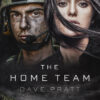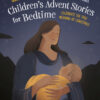
Gail Gaymer Martin
Good morning at Christian Author Network from Gail Gaymer Martin. Last month I provide information about Conflicts That Lifts the Bar, but this month, we’ll talk about conflicts again but the topic is: Not All Conflicts Sustain A Novel. I hope you find this information useful.
Not All Conflicts Sustain An Entire Novel
Since I’ve taught writing fiction for years and wrote the Writers Digest book, Writing The Christian Romance, I have received questions from writers about many elements and techniques of writing that they struggle with. Below is one of the questions and my response.
Question: This question is about conflict. I’m reading books, trying to figure out how to make my own conflict work better, but I can’t see that I’m doing anything differently than most writers. I don’t see that any of the conflicts I’ve read in fourteen books are any more developed than the conflicts that I have been getting “this won’t sustain an entire book” comments. Can you explain this to me?
My Response: On this Writing Fiction blog I have discussed and shared tips on conflict, but this is a good question and it’s worth answering it again.
Sometimes novelists must step back and look at the conflicts in their fiction. A story needs more than one, and each is resolved as the story goes to have a larger more complex one rise to challenge the goal of the character. Some conflicts seem important but they drags on through the story and a good conversation could solve the problem.
Deep Conflicts
Conflicts in fiction need to be real life conflicts that aren’t an argument or problem easily solved. Conflict must come from something deeper. It often begins in backstory, twisting the character’s psyche, affecting the characters goals and motivation, and driving them forward without commonsense sometimes. Many such conflicts deal with spiritual issues.
Other conflicts, and most often internal conflicts, develop within a character from a deep-seeded fear or need, and creates the inability to discuss it.
Look At Your Own Life
If you look in your own heart, you will probably think of something you did in your life that has caused guilt or shame, something you know the Lord had been utterly disappointed in you. These are issues which we don’t easily admit and sometimes they become the “molehills to mountains” conflict in a story that takes more than conversation to resolve. Remember conversation does not solve problems. It helps provide information but the true help comes from an internal process to work through the problem and forgive or accept.
Your story must contain these types of conflicts, ones that take courage and strength to open and to share with others because the possibility of ramification is greater than the power to share them. The question arises with the character is it better to remain friends than to take a chance on losing the relationship all together?
Examples of Deep Conflicts
Conflict can come from two people wanting the same thing and only one can have it – or two people wanting the same thing but in a different way. It can come from fears that people don’t want to admit — a woman who’s hidden a rape—highly fears how her relationship will be with a man.
In romance, someone with the inability to have children will not want to fall in love with someone who deserves to be a father or mother, and logically this will hold them back from falling in love. One of my Love Inspired releases has this type of conflict. Even if the other party says it doesn’t matter, it matters to the one who feels to blame and the issue is complicated more if the character saw a marriage fail because of this problem in another couple.
Conflict can come from two people who fall in love and each has a career in different areas of the country—established jobs they don’t want to leave and each hopes the other will give in. The problems can appear simple, but when this job is something the character struggled for–if it provides him or her a sense of identity and purpose–then giving it up can lead to martyrism (if that’s a word) and ruin a marriage.
Conflicts Combine Situation and Characterization
We have to look inside the minds of a character to see how they are viewing the problem with their own set of complexities. Just as emotion is complex and never clear cut, neither is conflict. It has a multitude of issues that feed into the problem that make it a “big” problem, where in your personal life, it seems so simple.
Conflict And Emotion
Still it’s the authors job to provide enough depth to a conflict to make it real and to bring out the emotion of the situation so it makes an impact on the reader and touches them in a way that they can relate to the struggle and it is vital for characters to change and grow throughout the book just as we change with each experience. This makes the characters real and it makes the conclusion realistic.
As far as story dealing with an unbeliever as a major conflict, I avoid conversion stories. I often have a weak Christian who’s struggle is due to something happening in his past that knocked his faith on a tilt—and as he struggles the tilt becomes less and less until he realizes that the Lord has been waiting for him with open arms. Then the story conflict can draw to a conclusion with realism.
Conflicts In Romance
Because of the nature of conflict, especially in a pure romance (not romantic suspense or a romance in women’s fiction), when a character says I love you, it’s the end of the story and sometimes the solution seems to end too fast. But if the author has built up to this, then it works. I have used the “I love you” from one character and a “no” from the other. In the character’s heart it’s a yes but something holds the character back from being willing to submit to the love they feel. Many things can hold people back, and I mentioned a few of them earlier.
Seeking The Deepest Conflict
When a conflict is not deep enough or not motivated by reality, it doesn’t work as the major “dark moment” conflict. The author needs to find something more important and deep-seeded that will cause true tension and emotion. Conflicts, like emotion, must be layered, deep and realistic.
(c) Gail Gaymer Martin 2015


